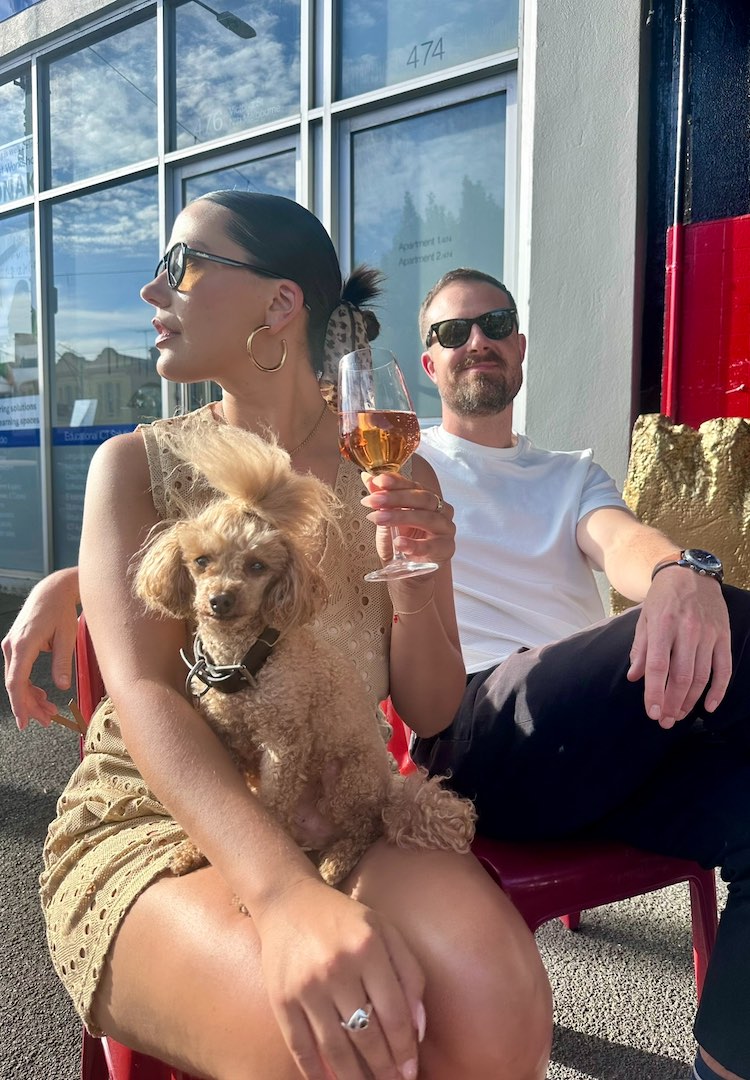I tried past life regression therapy, here’s how it went
WORDS BY LIZZIE MULHERIN
“It felt a bit like watching a movie but through the lens of the main character – which was, apparently, me in a former life.”
I like to think of myself as a pretty open-minded person. You know, a ‘try-anything-once’ kinda gal. I’ve tried quite a few things once (or twice) over the years that would qualify as ‘woo woo’ for many – psychics, kinesiology, reiki, hypnosis, an Ayahuasca retreat with an Amazonian shaman in Brazil… you get it.
So when I was presented with the opportunity to try past life regression therapy (PLRT) at the beautiful Soul Station in Sydney’s Inner West, my curiosity was piqued. And on the day of the appointment, so were my nerves. How did PLRT even work?
Interested to hear how others navigate the world? Head to our Life section.
“The belief behind PLRT is that we all have consciousness, and we all have a soul,” explained Jess, my PLRT practitioner. “The soul is believed by many, including myself, to be a collection of energy from the spirit world. Once we create this soul, we depart on our own journey or cycle of reincarnation. [It is also believed] that our stream of consciousness, or our list of past lives, is real but energetic, existing in a nonphysical realm. When in trance or hypnosis, you are able to utilise your intuition with the help of a guide to become aware of past life events and details.”
My nerves dissipated as soon as I stepped inside the heritage-listed home-turned-wellness centre. Complete with a yoga and meditation room and a tranquil water fountain in the courtyard, it’s essentially everything you’d expect from a place offering PLRT.
Shortly after arriving, Jess led me to a cosy, aesthetically-styled studio. We sat down in armchairs and she asked me a number of questions to assess whether PLRT was the right place for us to start. She wanted to ensure there were no health issues that might deem the treatment risky, such as a history of psychosis or schizophrenia.
“Some people who have mental health conditions may need to address them first. In these instances I usually create a tailored mental health program with six, 12 or 18 sessions, depending on the client, to work through any concerns prior to delving into the deeper work or PLRT,” she explained.
Jess also told me it’s not uncommon to unveil past traumas, but she always takes precautions to protect her clients. “I get a sense of the client’s ability to face traumas that may come up while completing the intake with them. If I have concerns, I will provide some psychoeducation on the process of PLRT and what may come up for them, depending on the goals they have set for the session,” she told me.
“Some clients will come into the session with an idea of a block or concern they want to find out about, in those cases, I usually get an idea of what may come up and what I need to do to prepare them. In most cases, all that’s needed is reassurance that only what they are ready for will come up in the session.”
Jess also asked whether I had tried anything like this in the past, before talking me through what was about to happen. “I’ll guide you into a hypnotic state where you’ll be more receptive to intuition and information from past lives,” she explained.
“Sometimes, we can uncover events or patterns that may still be playing out in your relationships, health or life today. Sometimes we can uncover how you developed certain gifts. You’ll be deeply relaxed, but awake and aware. You won’t lose control or go into a blackout state.”
For me, the word ‘hypnosis’ conjures images of gimmicky TV shows in the ’90s, where audience members were seemingly compelled to act like chickens at the click of a hypnotist’s fingers. They’d ‘come to’ mid-cluck – hands tucked into their armpits, elbows flailing – and have no idea how they got there, or why they were pretending to eat imaginary scraps off the ground. This was very different.
Putting it to the test
After our consultation, I got comfortable on a treatment bed – similar to what you’d find in a massage studio – and Jess took a seat beside me after covering my eyes with a weighted eye mask. She then guided me through a series of visualisations that seemed designed to calm my nervous system. It felt very similar to guided meditations I’ve done in the past. After a little while, she told me to imagine standing at the top of a staircase and to relax deeper with each descending step I took.
“When you reach the bottom, you notice you’ve arrived at a big, grand door. When you step through this door, you’ll be in a corridor lined with doors on each side. Go to the door that you feel the most pulled toward. You can gently raise your finger when you’re ready to go through.”
To my surprise, Jess’ description of feeling “deeply relaxed, but awake and aware” was bang on. Though there was a stream of mental chatter at the beginning (‘What if I can’t relax enough? Am I supposed to be thinking this much? Am I hypnotised yet?’), it faded as I focused on Jess’ descriptions and instructions.
When I ‘arrived’ at the corridor of doors, I felt sleepy but still conscious and receptive. I was able to respond when she asked me to raise my finger and felt a pull toward the third door on the left. “When you’re ready, step through the door,” Jess said. “Now describe to me what you’re seeing.”
When Jess asked me to describe where I was, my mind displayed an outdoor food market. It felt a bit like watching a movie but through the lens of the main character – which was, apparently, me in a former life.
The ‘movie’ focused on certain events and details, and skipped over others. Sometimes I would have strong images or feelings about certain situations or people without Jess saying anything, and other times it would ‘fill in’ at her prompts, like “Who are you with?”, “How do you feel?” and “How old are you now?”.
The story unfolded scene by scene. I was working in the food market as a young girl with my brother. At some stage, we became separated, and the next years were almost on ‘fast forward’ as I grew up without my family. The next significant scene was arriving in a bigger city as a young woman, looking for work. I found it waitressing in a cocktail bar while writing on the side. It then skipped a number of years again until I was much older, still living in the big city (I couldn’t tell which one) but now an author.
At times, it was stressful, scary and emotional. Towards the end (what Jess said was my “death’), it was peaceful. If you think this sounds a bit ridiculous, trust me – I get it. One of my biggest questions was how do we know we’re not just subconsciously making it up? “All I can say is the emotion,” Jess explains. “You can’t make that shit up.”
Sceptics of PLRT highlight that the treatment is not supported by modern science, and the images people see are imagined in response to the prompt. But in spiritual and natural medicine circles, PLRT is believed to help people discover and break patterns that aren’t serving them, or simply find out more about themselves.
But it’s not necessarily for everyone. “Some people find it quite difficult to visualise with their mind’s eye, so PLRT is often not as effective for them without having a few hypnotherapy sessions first in some cases,” Jess told me. “[I’d recommend PLRT for] people who want to become more connected to who they truly are and who they came to be on this earth. People who stand to benefit most are those who are open-minded or believe in past lives or the possibility of them.”
For more on past life regression therapy, head here.













